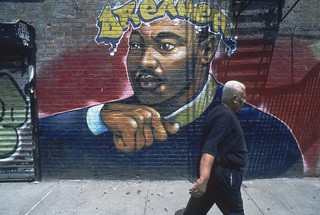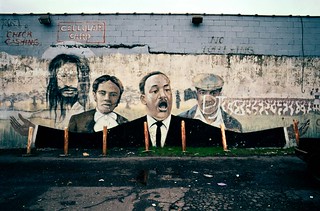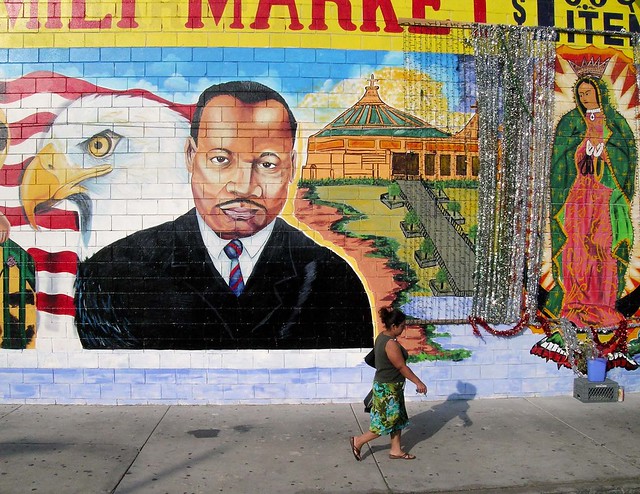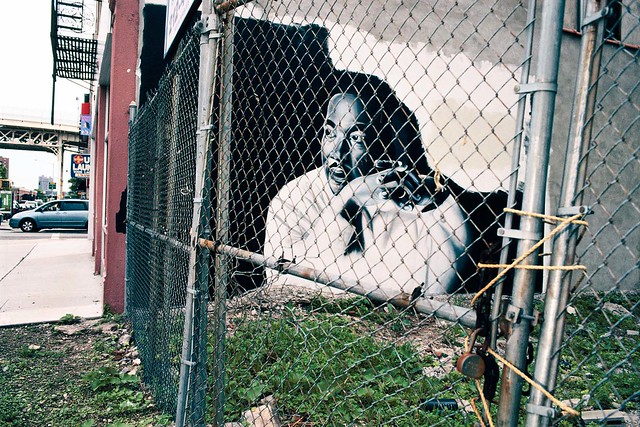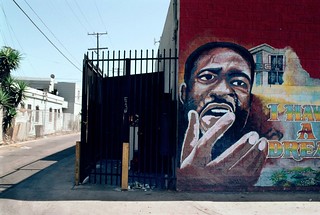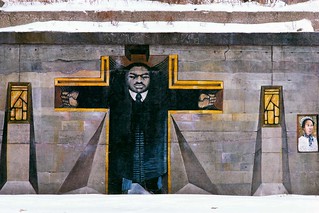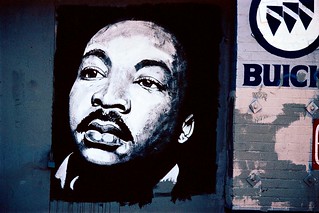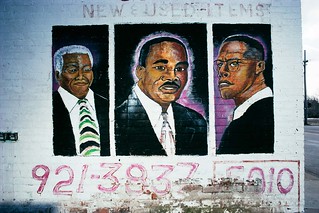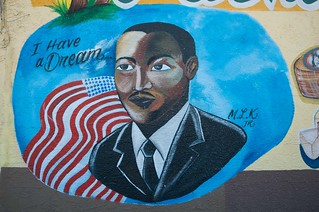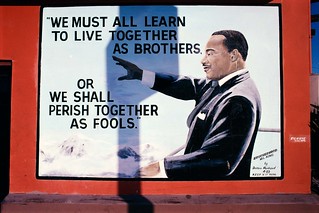(This piece first ran on August 23, 2013).
Martin Luther King Jr.’s “I Have a Dream” speech is a key event that changed the course of civil rights and American history. Throughout the years, Dr. King has become an icon of promise, justice and hope for millions — especially to those within the poorest and most segregated communities. Camilo Jose Vergara, known on Flickr as Camilo Time tracker, has been photographing urban America for more than four decades and can attest to Dr. King’s everlasting influence.
“I have seen many images on the walls of urban America,” Camilo tells The Weekly Flickr. “But the one that stands out still after all these years, are the images of Martin Luther King, Jr.”
Camilo has been referred to as an “archivist of decline” because of his interest in the American inner city.
“I was interested in the culture of the place and what the community values,” Camilo explains. “I found it in murals that were placed in alleys. Wall art reflects the community — what they’re thinking, feeling and even idolizing. It’s interesting.”
Camilo spent years returning to the same places to witness how communities changed. Over time, he accumulated an archive of images that people made. Among them he started to see the recurrent image of Martin Luther King Jr.
Each mural of Dr. King depicted different values and served many purposes. One was to stop gang graffiti which was always so pervasive.
“It was interesting because there were three symbols that were particularly used for graffiti fighting,” Camilo says. “One was Christ. The other was the Virgin of Guadalupe. The last was Martin Luther King Jr. The idea was no one would dare deface these icons.”
Dr. King’s image was also used to bridge the gap between different ethnic communities. He was a symbol of equality and peace; local businesses would display his image as a sign to welcome/invite others.
“A picture of King would diminish tension,” Camilo explains. “Particularly after the LA riots in 1992, when tension between the Latino and Black communities was very strong. Dr. King became a fixture in Latino stores — mini markets, liquor stores and so on — because it was saying to the African American population, ‘We are friendly to you. We take your symbols and make them ours.’”
Throughout his travels across America, Camilo noticed wall art reflected the ethnic makeup of each community. Most of King’s images reflected these areas in how and where he was painted. For example, in New York, because of its large Latino population, Camilo would see Dr. King next to Latino symbols — like the Puerto Rican symbol of El Morro.
“In Los Angeles, what you’d see is this whole school of people who were sign painters and probably never painted a Black person before,” Camilo explains. “So then Dr. King ended up looking very Latino. In some cases Latino-Indian or Mexican-Indian. In other places, like Detroit, Martin Luther King ended up looking Asian with slanted eyes. It was always different.”
Over the years Camilo noticed Dr. King in the midst of great icons like Nelson Mandela, Rosa Parks and Malcom X. Recently, he’s been joined by President Obama, Oprah Winfrey and Colin Powell. But as Camilo points out, “Martin Luther King was always there. He was the one steady thing.”
When asked why Martin Luther King Jr.’s image has made such an impression after all these years, Camilo’s answer is simple.
“Martin Luther King Jr. was a great man,” Camilo says. “Most speeches (when you hear them) lose power. But with Martin Luther King, there’s something about the voice, about the way he speaks that really moves you. It’s like you have to stop what you’re doing. He has this staying power.”
“People feel compelled to keep him on their walls,” Camilo says. “The number of truly great people is not that large, but Martin Luther King is one of those people. He has been there for a while, and I think he’ll continue to be there for a long time to come.”
Camilo’s photography has earned him a lot of praise. In 2002, he was awarded a MacArthur Foundation “genius” grant; and in 2013, he was awarded the National Humanities Medal by President Obama. Camilo was the first photographer ever to receive this prestigious award.
Visit Camilo’s photostream to see more of his photography, and visit his website to learn more about his work and where you can see it.
 Do you want to be featured on The Weekly Flickr? We are looking for your photos that amaze, excite, delight and inspire. Share them with us in the The Weekly Flickr Group, or tweet us at @TheWeeklyFlickr.
Do you want to be featured on The Weekly Flickr? We are looking for your photos that amaze, excite, delight and inspire. Share them with us in the The Weekly Flickr Group, or tweet us at @TheWeeklyFlickr.
